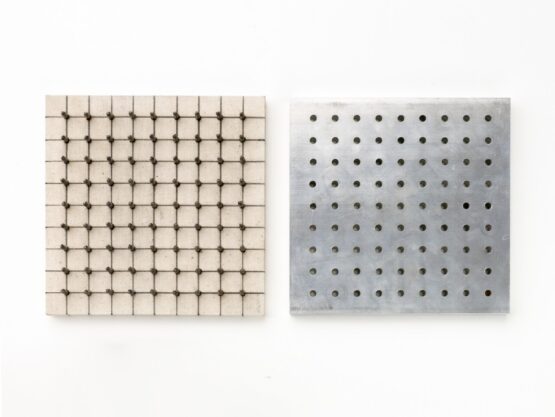
Galerie Thomas
Tuerkenstrasse 16
80333 Munich
Germany
Opening hours
Monday – Friday: 9am – 6pm
Saturday: 11am – 5pm

Günther Uecker has played a major role in the revitalization of modern art in Germany.
He began his artistic career studying painting and in the mid-1950s developed his own highly individual style – the wholly distinctive and immediately recognizable style that was to become his trademark. His first nail paintings date from this period. They are white-painted panels, their surfaces studded with spikes or nails set at different angles. As the light and viewpoint change, the surfaces take on a life of their own, scattering an intricate play of visual effects. This saw him moving away from the two-dimensional medium of painting. He later went on to hammer nails into three-dimensional objects – a piece of furniture, a piano or a radio.
Uecker joined the art group ZERO in 1961. His influence on the movement was to be critical. ZERO was a loose association of artists set up by Heinz Mack and Otto Piene. For the artists involved, the movement stood for a new beginning in art. A number of group works were produced and joint actions staged. Uecker incorporated non-art elements such as light and engines into his work and created kinetic light objects. Mack, Piene and Uecker staged ‘light salons’ at venues like the Stedelijk Museum in Amsterdam and the Palais des Beaux Arts in Paris. A last major event – a party held at the Bahnhof Rolandseck in Remagen in 1966 – marked the group’s dissolution.
Uecker has always also been a political artist. For example, his ‘Museen können bewohnbare Orte sein’ (museums can be habitable places) staged jointly with Gerhard Richter in 1968 was an overt protest action. In the same year, Uecker’s Terrororchester – an earsplitting musical performance using vacuum cleaners, spin dryers, a hammer and a sickle – was staged in the Kunsthalle Baden-Baden causing a sensation.
In 1970, Uecker was one of four German artists selected to design the German pavilion at the 35th Venice Biennale – the others were Thomas Lenk, Heinz Mack and Georg Karl Pfahler. The Venice installation brought him international recognition. One important exhibit was titled Helle Spirale (Bright Spiral) or Weisse Spirale (White Spiral), a work that combines the nailwork for which he was best known with the round form of the ZERO manifesto. The uneven grouping of the nails creates an illusion of dynamic motion. Uecker has an unique ability to use nails to ‘paint’ filigree compositions of extraordinary delicacy and poetic sensitivity.